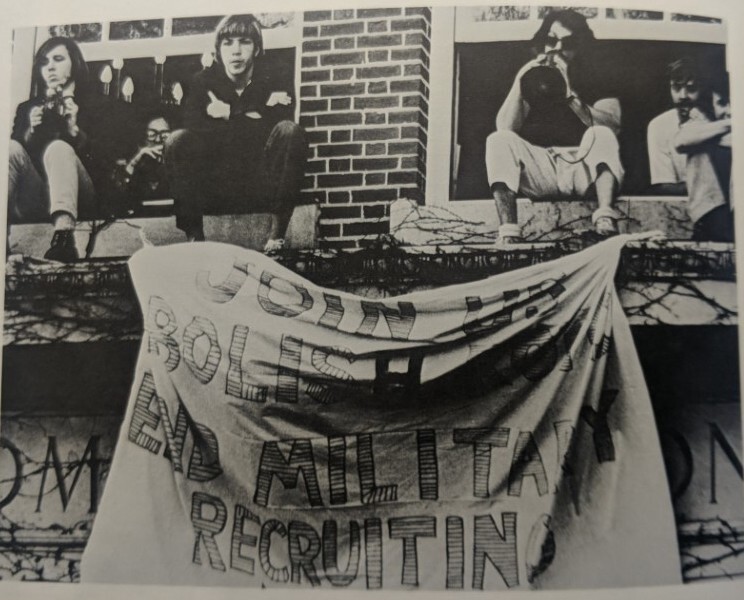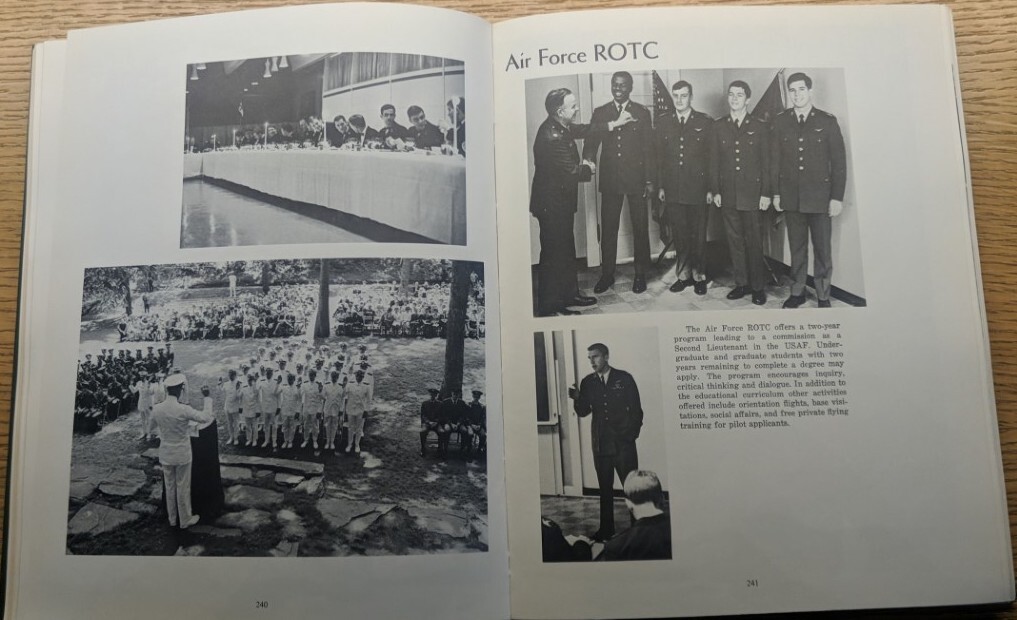Entering the Woods
Entering the Woods
In his senior year of high school, Dr. Copeland was a three season athlete. Playing football in the fall, basketball in the winter, and baseball in the spring, while also keep up with his studies, kept Dr. Copeland's hands full. Yet, this did not stop him from being active in his community and being noticed by those around him.
He was approached by his high school football coach, and told that he, out of his majority white team, had the grades and skills to apply to Dartmouth College. His coach told him that Dartmouth's Coach Blackman was interested in speaking with him about attending the school. Dr. Copeland was not yet aware of Dartmouth, let alone that it was a part of the Ivy League.
Luckily, those around Dr. Copeland were aware of the prestige attached to this recognition and he applied. Having never stepped foot on the campus before, he was unaware of the magnitude of the situation he was entering.
A Site Of Protest
Prior to the Dr. Copeland’s freshman fall, Dartmouth students, showed their disdain for the Vietnam War and Dartmouth's Reserve Officers' Training Corps (ROTC) program through the Parkhurst Takeover.
In the ROTC, students take their regular college classes while also taking military science classes with the obligation to enlist as an officer in the US Army, Air Force, or Navy after graduation. As a result of ROTC's presence on campus, Dartmouth was very politically active and became the site of many protests.
Many young people, especially in the late ‘60s were deeply unhappy with America’s involvement in the Vietnam War because they felt it was unnecessary and cost the lives of thousands of young people with their whole lives ahead of them.
As a result, students on campus saw Dartmouth's ROTC program as a way of funneling students to their deaths. They thought that it was the college's showing their support for the Vietnam War when they should be impartial. For this reason, they chose to show their discontent in myriad ways. In 1969, students invaded Parkhurt Hall and refused to leave until the police were called. Multiple students were arrested. Although it did not escalate to a violent altercation between the police and students, it was a nationally covered event and left a grim feeling on campus.
A white student, Paul Hodes, Class of ‘72, was an active protester during the Parkhurst Takeover and describes it as a cultural shift for himself and the campus.
“Now, if I was a parent, I’d say, Something’s really, really different. And then when the political arguments start, you can imagine the scene that played out in many American households around the war and the radicalization of young people. There was a—it felt like a—you know, I lived through this cultural shift. For many people, it happened earlier; it happened for me when it happened.”
Paul Hodes on the Parkhurst Hall Takeover
Watch Your Back
The Bridge Program
The Bridge Program was an interactive organization that helped integrate new Black Dartmouth students into the campus. This was done through tours, informal mentorship, and info sessions on how to best integrate. It was instituted by the Tucker Foundation, which was created in 1951 by the Board of Trustees to "support and further the moral and spiritual work and influence of Dartmouth College." In its first twenty-five years, it developed not only religious programs but also programs for social issues and community involvement.
At Dr. Copeland’s time of entry, he was one of ninety Black freshmen joining the college's campus, the largest class of Black students in the history of the college. As a result, there was a clear cultural shift on campus and locals in Hanover noticed it, too.
Coming from a neighborhood that was originally well-integrated, Dr. Copeland was used to interacting with white people on a daily basis. However, Hanover was a different place and the people surrounding the college were not always the most welcoming.
“Fortunately it didn't appear to be a big problem. And I think part of that was because, with those warnings and understandings."
Ronald Copeland on The Bridge Program
While the Bridge Program was developed out of this Foundation, the responsibilities that came out of it landed on the shoulders of black sophomores, juniors, and seniors who had experienced what Dartmouth was like and were, therefore, able to warn incoming black students of what they should expect.
One could think that this program would make black freshman feel protected but also more "othered" due to having one of their first introductions to the campus being warnings. However, Dr. Copeland said:
“Oh, it was greatly appreciated it. We felt very connected and, when the program was over, and people went home and then came back to start school in earnest, it was good to come back to the campus with familiarity of it."
Dr. Ronald Copeland




